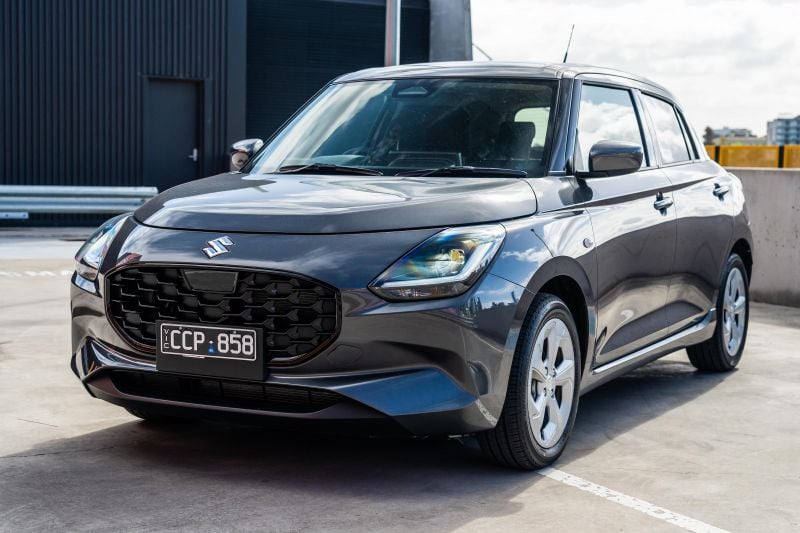The question of regional automotive safety ratings has once again come to the surface with the Australasian New Car Assessment Program (ANCAP) today slapping the new Suzuki Swift with a one-star safety rating, despite the exact same vehicle being awarded four stars from Japan’s equivalent independent safety authority.
The outgoing third-generation Suzuki Swift had been rated as a five-star vehicle (with significantly fewer active safety technologies), following testing conducted in 2017 and covering Swift models sold from June 2017 until June 2024.
The new Suzuki Swift, Australia’s most affordable hybrid, is now being punished by ANCAP for its specification levels, which differ from those of its European counterpart, much in the same way as the Honda Civic, CR-V, and ZR-V.
The fourth-generation Swift (codenamed AOL) has fallen short of ANCAP’s latest requirements to achieve a higher score than one star, due to what the organisation says are structural differences between the European and Australian models.
“In comparison to the three-star rating achieved by Swift vehicles sold in Europe, vehicles sold in Australia and New Zealand performed differently when crash tested,” said ANCAP in an official press statement.
The main difference between the European Swift and the one sold in Australia, Japan and New Zealand is the lack of absorption bars around the radiator, and one on each side of the wheel-arch.
This omission has led ANCAP to score the new Swift at just 47 per cent for adult occupant protection and 59 per cent for child occupant protection. Its collision avoidance systems scored 54 per cent.
So how does a car that scores four stars in Japan, whose predecessor scored five stars in Australia, go down a one-star rating?
The Japanese safety authority, JNCAP, scored the Japanese Swift (which is structurally identical to Australia’s model) 88.70 points out of 89 for preventive safety performance and 81/100 for collision safety performance. You can see the full report here.
In that same report, the new Suzuki Swift scored:
- 4/5 in full-wrap frontal collision test (Driver’s seat)
- 5/5 in full-wrap frontal collision test (Rear passenger’s seat)
- 4/5 in offset frontal collision test (Driver’s seat)
- 3/5 in offset frontal collision test (Rear passenger’s seat)
- 5/5 in side collision test (Driver’s seat)
- 5/5 in neck injury protection rear-end collision performance test (driver’s & passenger’s seat)
ANCAP’s significantly different scorecard begs the question: what constitutes a safe car and for which market? How can the same vehicle be rated so much more highly in Japan than Australia?
The new Swift is undoubtedly a safer car than the previous five-star rated vehicle when it comes to active safety technologies, since it gains autonomous emergency braking (AEB) with motorcycle and cyclist detection, lane keeping assist, adaptive cruise control, blind spot monitoring, rear cross-traffic alert and a reversing camera.
Suzuki Australia boss Michael Pachota is keen to emphasise the new Swift’s value proposition as a hybrid offering in the light car segment.
“The Suzuki Swift has built a long history of providing a strong value proposition for customers of Australia and New Zealand. The Swift has been developed with the consideration of driving performance, comfort, emission levels, fuel efficiency, safety, and affordability,” he said.
“The development of the latest generation model has been aligned with the same philosophy. We have constantly been providing feedback to Suzuki Motor Corporation on voices, opinion and information of customers, media or any other sources in the markets for the benefit of future model planning of Suzuki Motor Corporation.
“The latest generation Swift offers considerably more safety assist features than the previous generation and the distributors are always committed to importing the highest specified models made available to their markets.”
Whether you choose to believe the Japanese NCAP or the Australian NCAP, the question of whether a new vehicle is safe or not is seemingly no longer black and white, and Australian car buyers are left to decide for themselves whether the most affordable hybrid in the market is worth a look.
Read our review of the Suzuki Swift.





